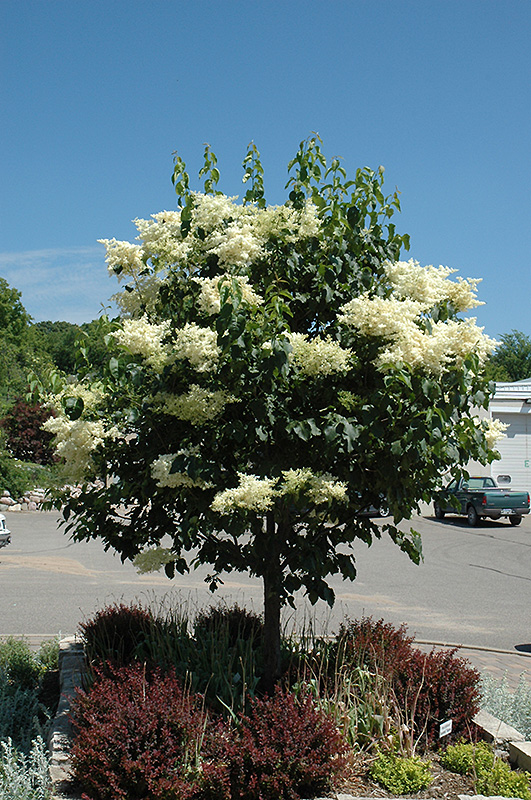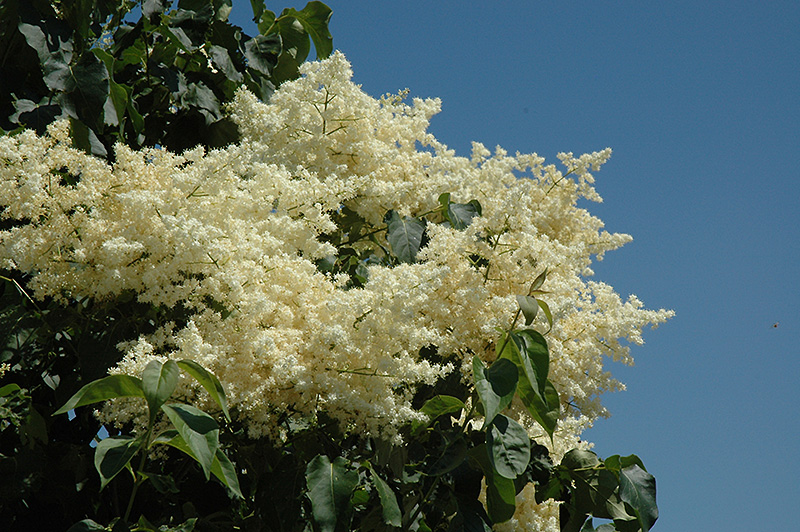Lilac Japanese Tree, Snowdance Syringa reticulata 'Bailnce' Height: 20 feet Spread: 20 feet
Sunlight:
Hardiness Zone: 3a Brand: First Editions Description: An excellent oval shaped small tree which produces large clusters of fragrant creamy white flowers in early summer, starts blooming at a young age and flowers reliably every year, doesn't produce unsightly seed heads; a beautiful addition to the landscape Ornamental Features Lilac Japanese Tree, Snowdance features showy plumes of fragrant creamy white flowers rising above the foliage from late spring to early summer. It has dark green deciduous foliage. The pointy leaves do not develop any appreciable fall color. The smooth dark red bark adds an interesting dimension to the landscape. Landscape Attributes Lilac Japanese Tree, Snowdance is a dense deciduous tree with a shapely oval form. Its average texture blends into the landscape, but can be balanced by one or two finer or coarser trees or shrubs for an effective composition. This is a relatively low maintenance tree, and should only be pruned after flowering to avoid removing any of the current season's flowers. It is a good choice for attracting bees and butterflies to your yard, but is not particularly attractive to deer who tend to leave it alone in favor of tastier treats. It has no significant negative characteristics. Lilac Japanese Tree, Snowdance is recommended for the following landscape applications; Planting & Growing Lilac Japanese Tree, Snowdance will grow to be about 20 feet tall at maturity, with a spread of 20 feet. It has a high canopy of foliage that sits well above the ground, and is suitable for planting under power lines. As it matures, the lower branches of this tree can be strategically removed to create a high enough canopy to support unobstructed human traffic underneath. It grows at a medium rate, and under ideal conditions can be expected to live for 80 years or more. This tree should only be grown in full sunlight. It does best in average to evenly moist conditions, but will not tolerate standing water. To help this plant achive its best flowering performance, periodically apply a flower-boosting fertilizer from early spring through into the active growing season. It is not particular as to soil type, but has a definite preference for alkaline soils. It is highly tolerant of urban pollution and will even thrive in inner city environments. This is a selected variety of a species not originally from North America. Special Attributes Prune within 2 weeks after blooming is done, so you will get flowers next year. Lilacs are not classified as toxic to people or pets.![]()
![]()
![]()
![]()
![]()
![]()
![]()
![]()
![]()
![]()
![]()
![]()
![]()
![]()


